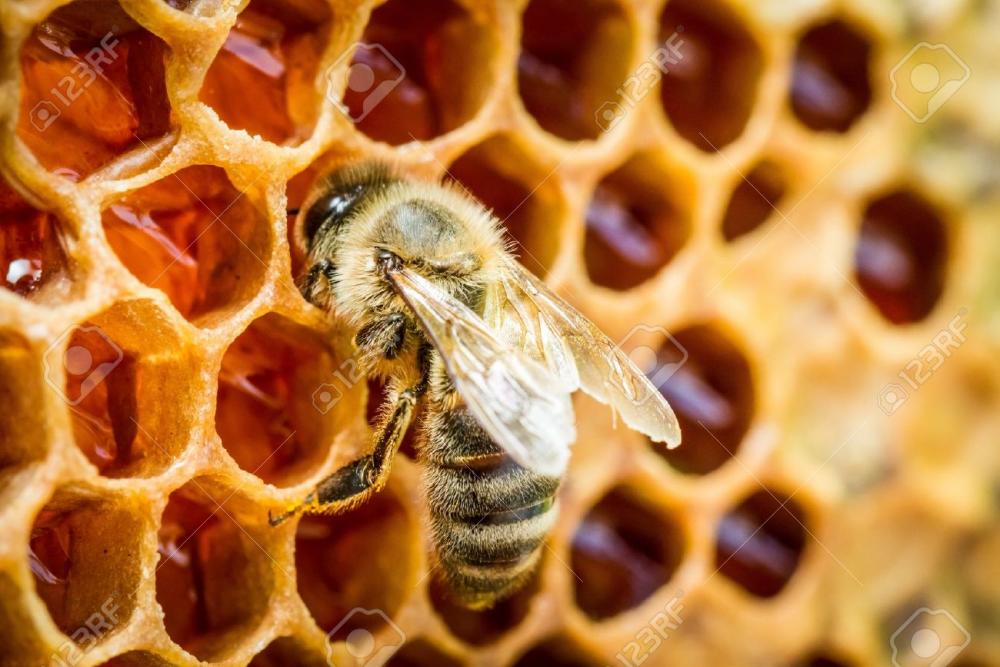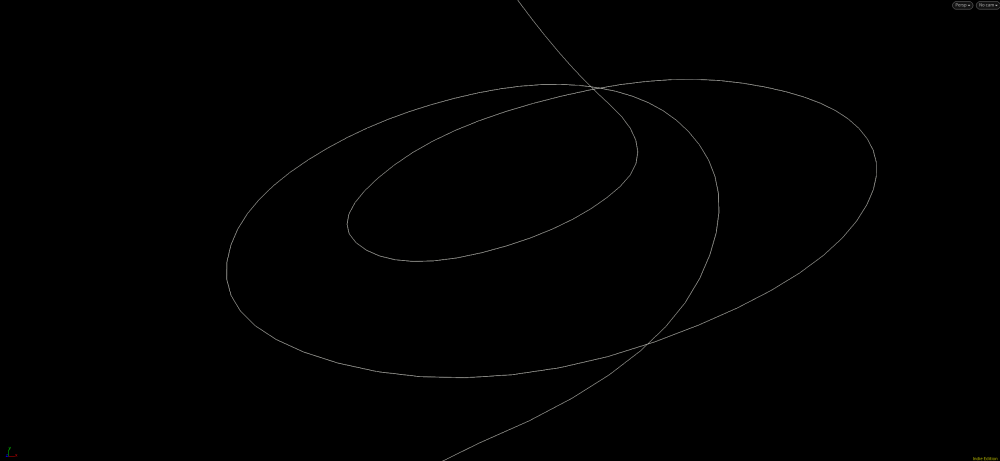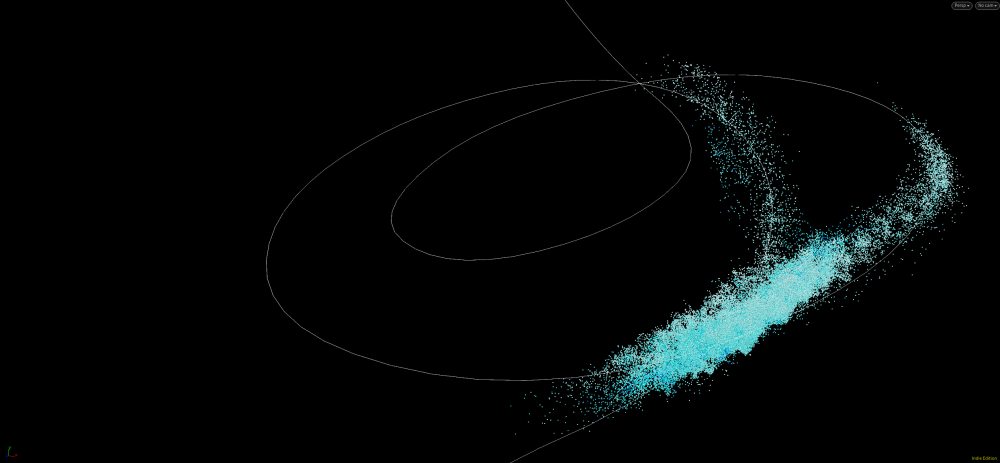Search the Community
Showing results for tags 'POPs'.
-
Hi guys, I'm trying to get bubbles to collide with each other but can't seem to find the solution yet. I'm using points that are emitted upwards and assign a random pscale value to each new point. I'd like points to change colors when they are too close to each other, that way I can check if the setup works. So when 2 points are close to each I'd like to check if the distance between them is not smaller than the radius of the point and the radius of the closest point. If it is, then the points need to turn red. For now, all my points turn red, but I think it's because I can't find a way to access the closest's point pscale value to compare it with the distance. Can someone guide me on how to approach this kind of issue? I tried to use pcfind but that doesn't seem to work too . Bubbles_WIP.hipnc
-
Hello, I have been trying to recreate the black hole effect from the film 'Eternals' for a few weeks now for a thesis project I am doing and I am not really getting close. This is the effect in question: Arishem's FInal Judgement The effect happens at 1:17 My approaches was to create some circles with an animation spinning around the circles driven by the curveu attribute and offset by the 'copynum' attribute I got from the copy and transform node. I was driving a smoke sim from this and then I used the curveu as a temperature attribute to drive some scattering in the pyro shader. However this approach has not really gotten me close. I realise its quite a complex effect but any tips on recreating it would be fantastic! Thank you for reading
-
I am linking my Houdini project file for you guys! Please take time and analyze my blunders, trying hard to make this project. I am having problem with my project which i am making for my portfolio, but one thing has blown my mind in pieces since few days now, so sad. Here i have done Ground fracture and simulated all the fractured pieces. But when i am trying to make Debris pieces collide with my Static Object(i.e. Ground Fracture), then it won't collide and by ignoring that, fall down. Particles are not colliding with the Static object. I have tried each and every step i know to solve this but particles are not colliding. I tried by making the ground VDB and then make volume collision on Static object, that works but it plays the simulation too slow that i can't even analyze what is happening. Please help me guys, From my side i have done everything i know. Your support makes more value to my project, Thanks in Advance. Ground_Fracture19.hip
- 2 replies
-
- pops
- debris particles
-
(and 2 more)
Tagged with:
-
When I plug in a pop sim into a sop solver and dive into the solver only the initial particles on frame one are simmed and then nothing else how could I fix this?
-
Is there a way to blast things across time? Short scenario: I have a set of points, and some of them behave badly some of the time. It's easy to set an attribute on the bad points and kill them, but I don't want the pointcount to vary across time. I have an ID on the points. I would like to be able to check if a point is ever bad, and then kill it at frame 1 - so my output has a constant pointcount with constant IDs of only the points that are never bad. Possible? How? Long story: I'm using a FLIP sim to make points wander nicely across a surface. The bulk motion is great, but the border points behave terribly. I can't delete the border points during the sim, because I lose fluid volume and all my points wander off the edge. Most of the border points stay at the edge of the sim, and it's easy to transfer an attribute to them post-sim and kill them off -- but there are exceptions. Some "good" points wander to the edge and get stuck; some "bad" points work their way off the edge and join the bulk motion. If I'm just blasting the border points as a post process, those few points that escape end up ruining my pointcount. How do I smite them? Thanks in advance!
-
Hey there, I have a simple setup where I generate a bunch of particles and let them drop on some spheres. I would like to achieve to change the Color of the Spheres based on hit by a particle. With hitprim I was abled to change the color of primitives of the spheres but I would like to check based on the selected primitiv to select the whole Object. Also I would like once changed from Black to Red to keep the color even after the particle passed through and left the object. And on top of that, if possible to add some delay. So once the particle hit the object it takes like 10-15 Frames till the spheres changes color best with fading to that color (but not sure if that is possible).. Has anyone an idea how to achieve that or is there a different way. I tried with attribute Transfer but couldn't get it to work. I uploaded my current setup: Particle_hit_detection_changecolor_01.hip
-
Please someone help me with this: I made a Group in POP solver for collision of particles named 'hit'. Now in the wrangle node, I made a chramp for the velocity based on my own custom attribute which is '@customage' from 0-1. Now I want to ask that for POP attract, if I want to make the velocity affect all the particles except my 'hit' group particles, then how can I do that. Your help will be appreciated. Thanks! Particle attracting effect.hip
-
I am building a flock using separation, cohesion, and alignment, but I'm modifying the alignment variable. Research showed that you can use a superfluid equation to define the speed of the turn information traveling through the flock, and that helps give the flock that really fluid look. I'm trying to figure out how to control the speed of the information. I need to 1. be able to dynamically change the speed of the information based on the flocks cohesion (when they're more cohesive, the information travels faster) 2. be able to send out "waves" of information every frame, so 24 times a second 3. send out non-disappating waves (I tried the ripple solver, but one of the problems was the dissipation of the magnitude of the wave) I'm thinking CHOPS might be the best bet, but right now I'm just finding a lot of CHOPS information dealing with sound and audio. LMK if anyone knows of a good node that could help me. Right now I'm looking into just hard-coding it in VEX (basically storing the velocity of ALL of the boids at 10 frame intervals), but that will be VERY intensive.
-
I'm currently building a POP network to simulate rain on a window and would like to mimick the small variations in surface tension that help cause the erratic motion of rain drops running down the surface. I know how to do vary an attribute using VEX, but I'm not sure how to go about it with parameters, since I can only assign one friction value for the whole of the geometry in the Static Object SOP. Any help would be great!
-
Hey peoples! I recently started a personal project with the main purpose to explore setups that I either couldn't do during real production, curiosity or pure fun. As a base and also source of inspiration I'm taking real acrylic artworks of a good friend of mine. The photographs of the real artworks are prepped in Photoshop to be able to extract certain textures which I then use in Houdini to create my setups with. The concrete room was built out of a couple of individual decals and assets from Quixel. The whole thing is then being rendered with Redshift, comped with Natron and finalized in Davinci Resolve. From time to time it's seriously fun to play around with setups without having somebody behind me telling me what to do creatively like in a professional environment. No pressure, just fun Here's the first couple of clips I created in this series. Hopefully it's as fun to watch for you as it was creating it for me! You can also check it out on Instagram, Behance or Vimeo. Feedback, questions or whatever appreciated! Volume 1: Volume 2: Volume 3: Cheers!
-
Greetings! I'm trying to attach a vellum sim to a pop sim... The idea is that I first do a pop advection sim then attach vellum cloth to that so they collide and interact with each other... It's almost there, with one slight issue. It seems that vellum is calculating the particle point for every frame and I need it to calculate only the newer emitted (birthed) points... Is there a way to tell it to do so or is there a cleaner setup to achieve what I want? Attached is a simple test scene of where I'm at. Any help, guidance, or advice would be greatly appreciated! vellumParticleTest01.hiplc THANKS
-
Hi everyone, I am trying to achieve a wispy magic Effect like in the attached example. I have tried emitting Particles from circles and lines, advecting them through velocity fields from pyrosims and different noises, but im not even getting close. I just can't get the stringyness right. Can anyone point me into the right direction? Regards, Dani
-
Hello! I've been using Houdini as a TD for about 2 years now and I just recently got my hands on a C4D and X-Particles license. Playing around with X-Particles it has become apparent that Houdini can make something fairly simple (like particle simulations with constraints) very difficult. For these past 2 years I've been trying to get, specifically, thick liquid like particle constraints (not just viscous but stringy) working in Houdini and I've never been able to get results I can be completely happy with. I've been able to achieve "sticky" effects using vellum grains and vdb meshing before as seen here, however, I was always after a different effect using a particle simulation that was NOT attached to a mesh but still behaved in a similar "sticky" fashion when coming in contact with colliders. After trying this over and over again in Houdini and having unsatisfactory results, I've now experimented with X-Particles and I was a slightly frustrated by all of the time I had spent in Houdini and how simple and quick it was to achieve exactly the effect I wanted in X-Particles. In the video below you can see what effect I was after in XP. I was curious if anyone at all has re-created this stringy liquid effect in Houdini with POPs? It seems clear to me that FLIP fluids are not really the answer for small scale simulations where you want a "stringy" surface tension look. I've gotten close with FLIP and vdb meshing in Houdini, but it never looks as natural and real as X-Particles. I've heard that maybe the POP Fluid node may be the answer (here), but I'm curious if anyone has attempted these stringy constraints in a Houdini project! Any Houdini workflow tips for such an effect would be appreciated because the cost of X-Particles and C4D is not something I plan on paying for the rest of my days!
- 2 replies
-
- xparticles
- gore
-
(and 11 more)
Tagged with:
-
Hi everyone. I have a very basic setup and a problem that can't solve. I cant transfer "density" attribute from volume to particles using POP ATTRIBUTE FROM VOLUME. But I can't transfer color, though it should work in a same way as density attribute transfer. I include here printscreeens so you can see easily. I create te volume, assign color with color SOP. Refer to this color sop within POP ATTRIBUTE FROM VOLUME, refer to Cd as a name of a volume and.... nothink works(. Thank you in a advance.
-
Did I do something wrong here? Getting a "Read only expression on left side of assignment" error... could someone help me solve it.
-
I have a popforce node which I would like to fade amplitude from a value to zero over time. The expression below eases in using age. amp *= smooth(0, 1.5, @age); How can I ease out?
-
Hi, I am trying to create condensation or water dripping over the surface, something like this, but so far i am totally unsuccessful. A liittle help would be appreciated
-
Hi there! I'm trying to figure out how to create a POP emitter from Pyro in order to have a realistic (and procedural) Fire Sparks simulation based on heat amount. I've tried something but it's a very rudimentary solution, especially because I'd love to emit particles from top of fire (maybe when heat field falls down). How I can use a pyro field as POP emitter? And, most important, what field do I need to use? Do you have any suggestions, tips or tuts to share with me? Any help will be really appreciate! Thank you for your time. mois_fire_sparkles.hip
-
- sparks
- pop emitter
- (and 8 more)
-
Hey ya'll, So I've been working on this photoreal honeycomb for a project and I'm not happy with the amount of detail I'm achieving. I'm relatively new to Houdini and I've been trying to use it as a Generalist package however as soon as I have to use any code I start to feel out of my depth. In saying that, my current solution is almost all procedural and all with nodes and no scripting. I have opted for using attribute noises and point VOPs to generate roughness, displacement/surface noise as well as using shader displacement/normal noise to get High frequency noise without having an insanely heavy mesh. I should mentioned I am using redshift to render currently. So my main question is how can I make this look more detailed and more photoreal? (I have provided a render of a test section as well as photo reference of the detail level I would like to achieve.) That test render is the starting point of a camera animation, so that is as close as I intend to get to the honeycomb. I was wondering if I should use a solver to get an organic growth effect or maybe a volume vop? I have tested a volume VOP set up with no luck. Also I find my shader in redshift gives me a plastic look with too much sheen and the normal/displacement looks fake but I can't get it looking better. Any suggestions would be greatly appreciated as I feel I've reached the edge of my knowledge on this. As mentioned I am currently using Redshift, however if someone has a Mantra solution that works well I would be happy to look at that too. I have provided a hip file with the dome light HDR and the mesh cache as well for simplicity. Annnnd this is a small section of the actual amount of honeycomb needed, the actual size is probably 10x that section. Thanks in advance for your help! Jon beach_parking_8k.hdr Honey_high_res.bgeo.sc JW_Honeycomb_Detail.hip
-
Hello Houdini Magicians, This little bit of code is, according to the performance monitor and some debugging, slowing down my simulation... alot. Specially with a high number of particles. The nPt comes from the nearpoint function. I analyzed the performance impact of the nearpoint function with many particles and it is not significant. Its the conditions and moving/removing particles from groups. What is the optimal way to do this?
- 2 replies
-
- popwrangle
- popnet
-
(and 5 more)
Tagged with:
-
Hello, I'm just experimenting with FLIP fluids for the first time and was wondering- is there any way to prevent the initial "glob" of liquid that emits on the first frame? Ideally I'd like the emission to start at nothing and then gradually build into a thicker stream. When I uncheck "Create Particles" in the FLIP Source node it removes the particles from the node, but has no effect on the sim.
-
Hi! This is me trying to understand the popSolver in houdini. What is the difference between this two inputs and why they are both wired like that by the shelf (Check the attached image) The particles seems to do the same thing if I rewired as I showed in the second network and they don't do anything at all with the 3rd one. Also why is the wire dotted between the popsource and the popstream, They only work together is both inputs (pre and post) are wired like that. Thanks and pardon my English :$
- 4 replies
-
- post-solver
- popsolver
-
(and 3 more)
Tagged with:
-
Hey Guys, i got a question. I got a vellum sim and i am emitting every 8th Frame one sphere into my sim. I did it with -> $FF % 8 == 1 but now i want that emission just between Frame 1 - Frame 48. So between F1 and F48 i want every 8th Frame an emission. How can i get this with an expression? Cheers and Thanks!
- 1 reply
-
- simulation
- vellum
-
(and 7 more)
Tagged with:
-
Happy Friday, Trying to wrap my head around constraining or copying packed rbd's to particles that are moving along a surface. Attached is my test scene please help if you have time! Thanks, particleRbdTest_01.hip
-
Hi, I have an issue that I have not been able to figure out. I need particles/fluid to follow a curve, which I know how to do easily, but this particular curve crosses over itself a couple times so using Volume Velocity and Curve Force causes to particles to divert off by grabbing on to a later section of the curve. (ref images attached) Is there a way to restrict them to the current section they are on so that they ignore the areas where the curve crosses over itself? I have not been able to figure out a way to do it so I thought maybe the amazing Houdini brains on here might have an idea? Thank you in advance for any help/suggestions you can offer!




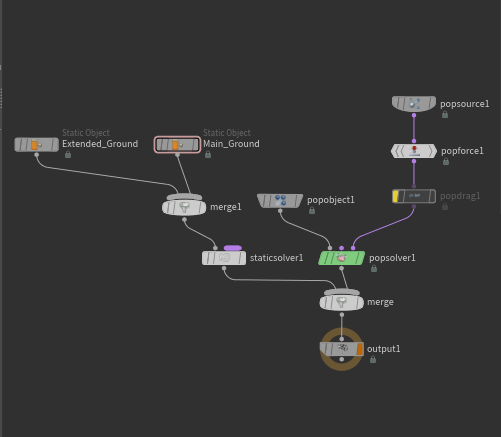
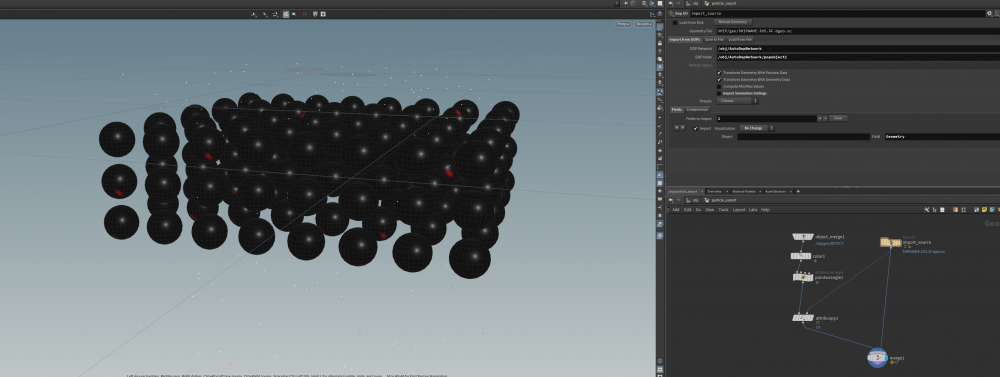
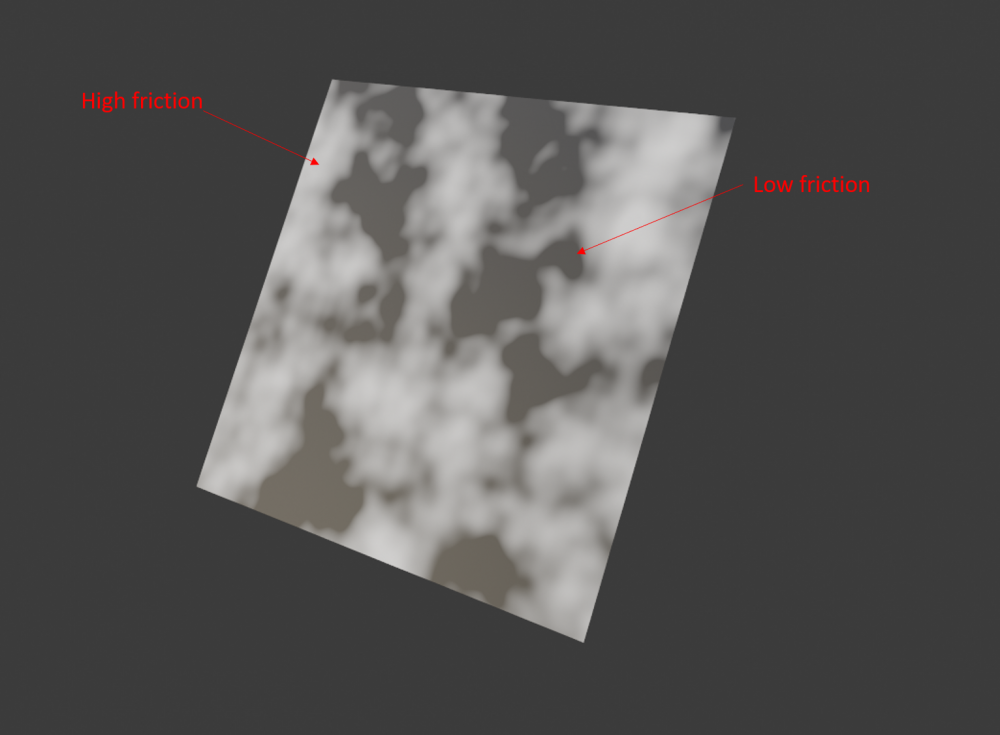
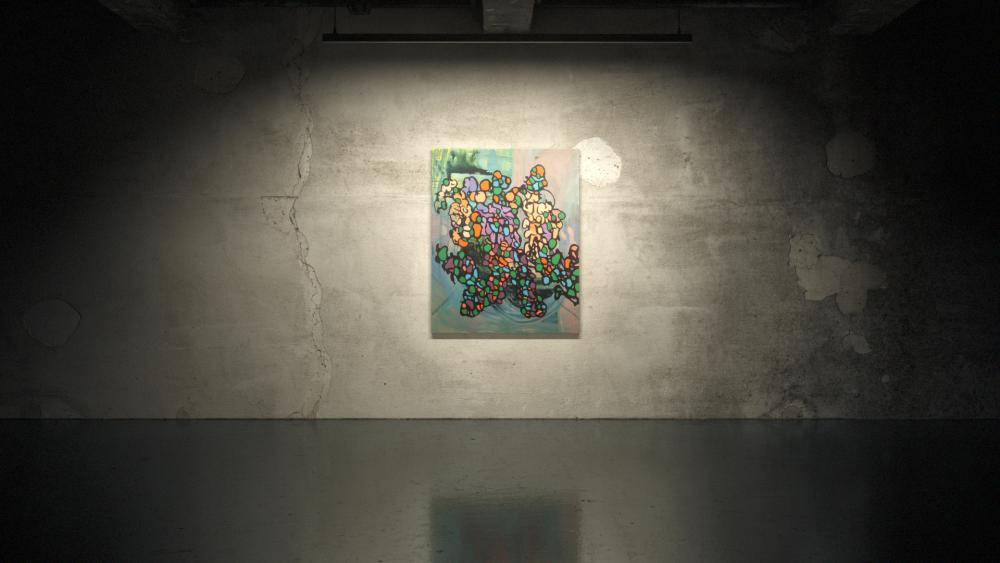
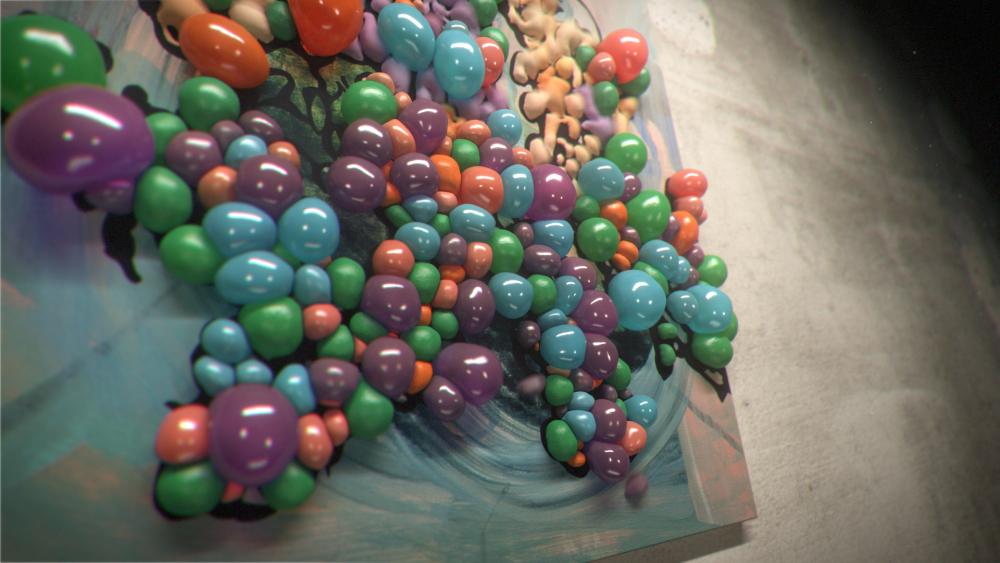
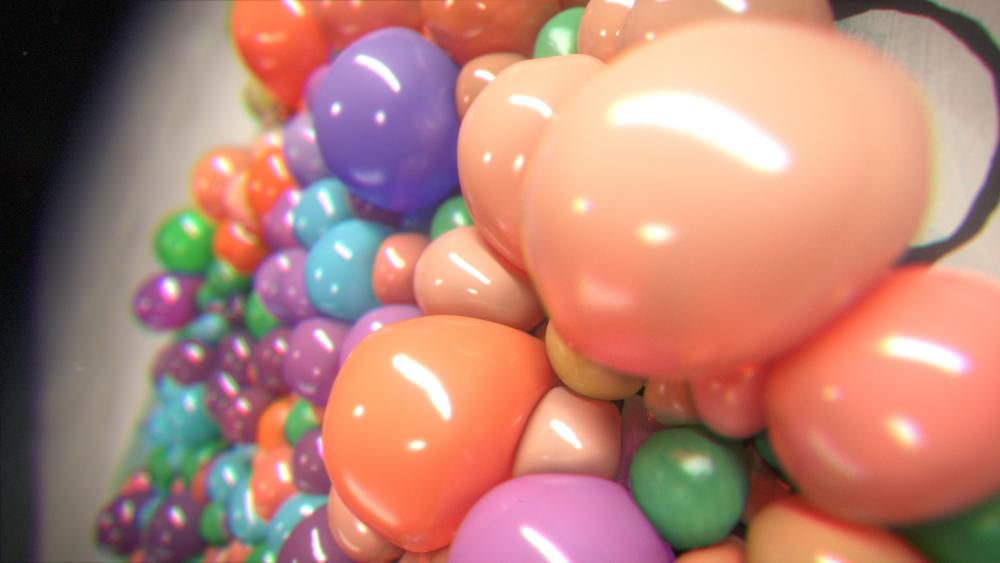
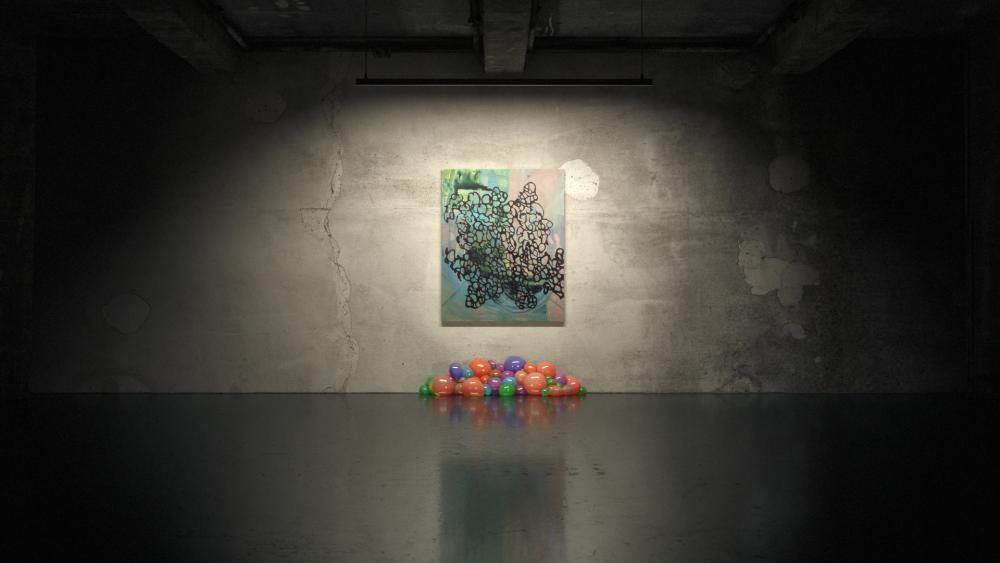
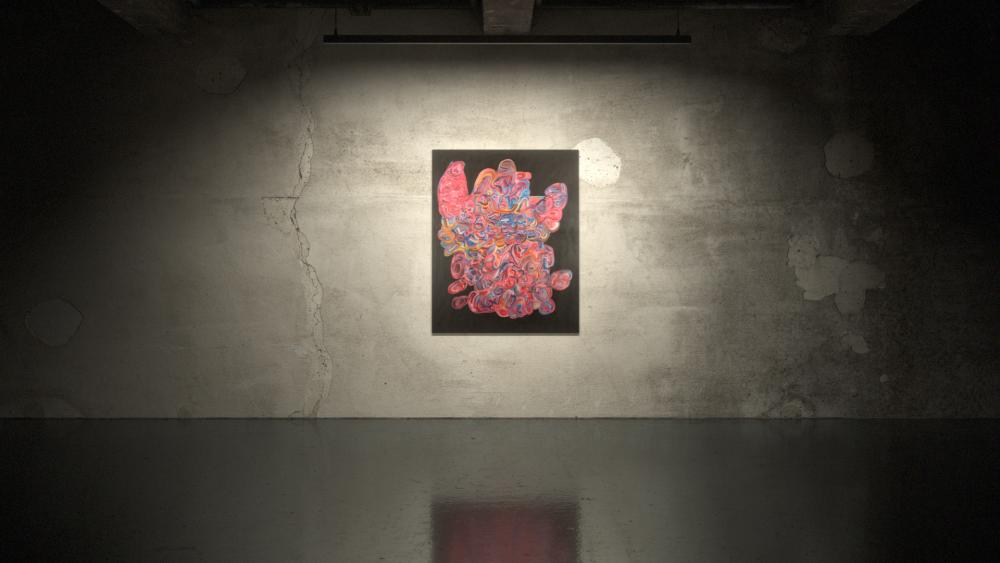

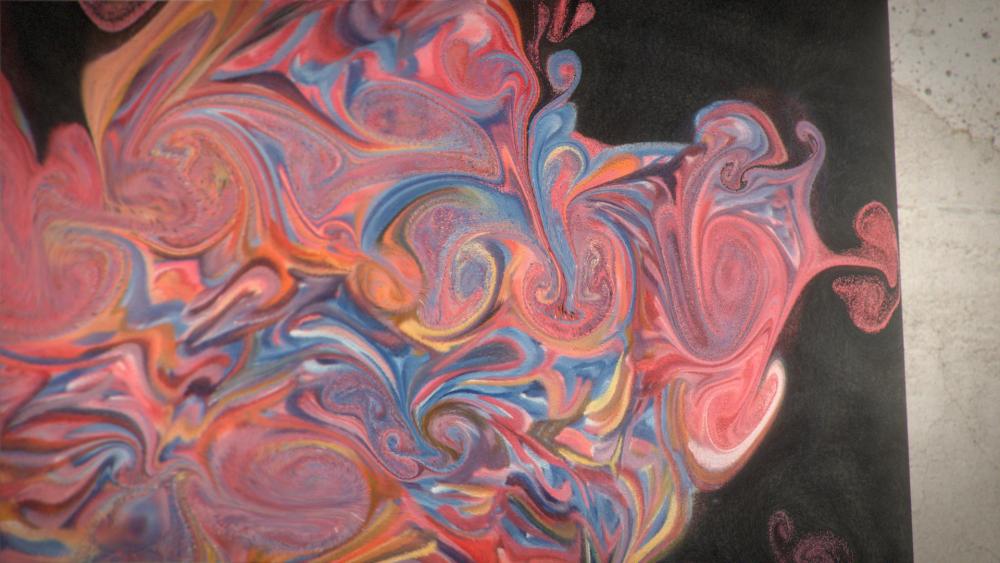
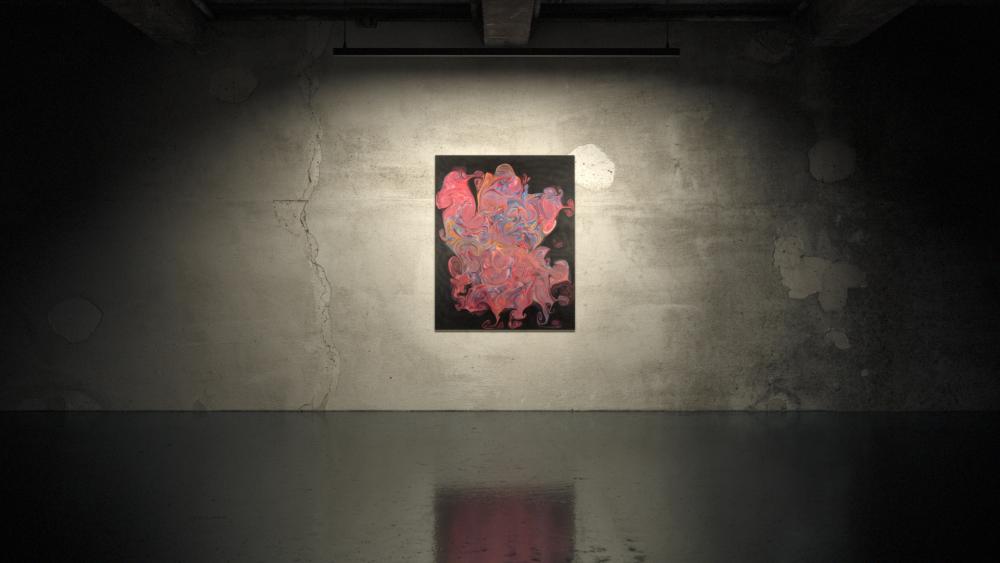
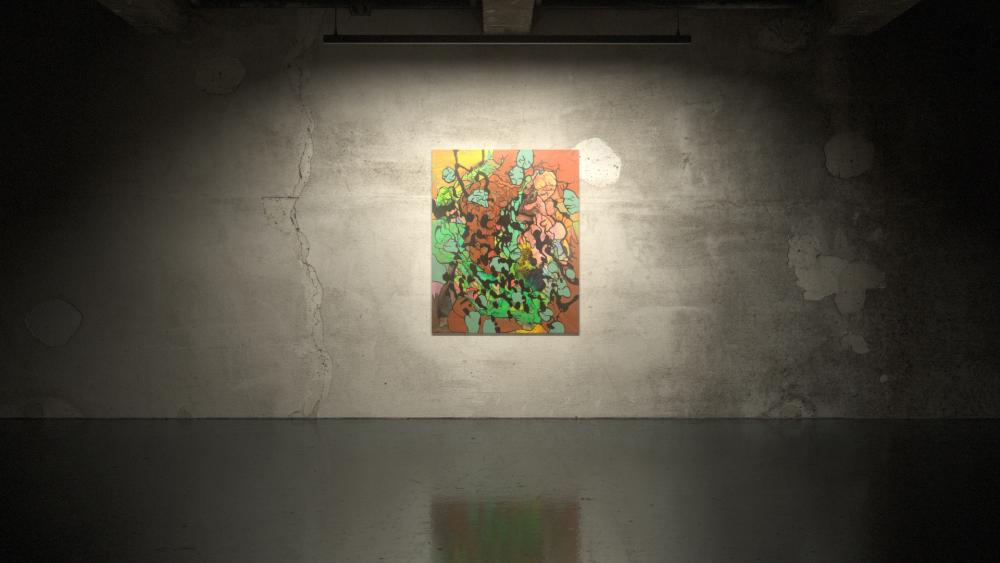
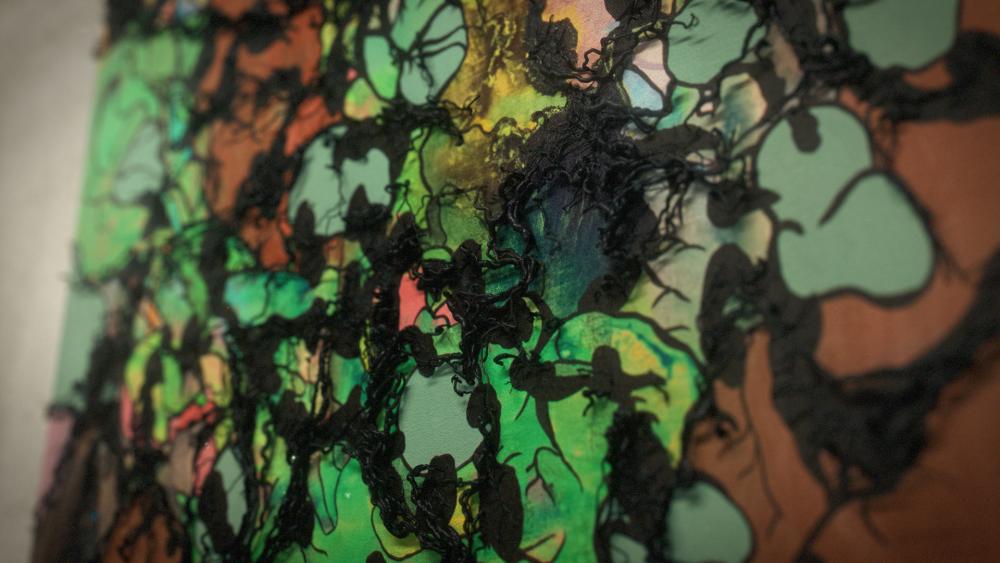
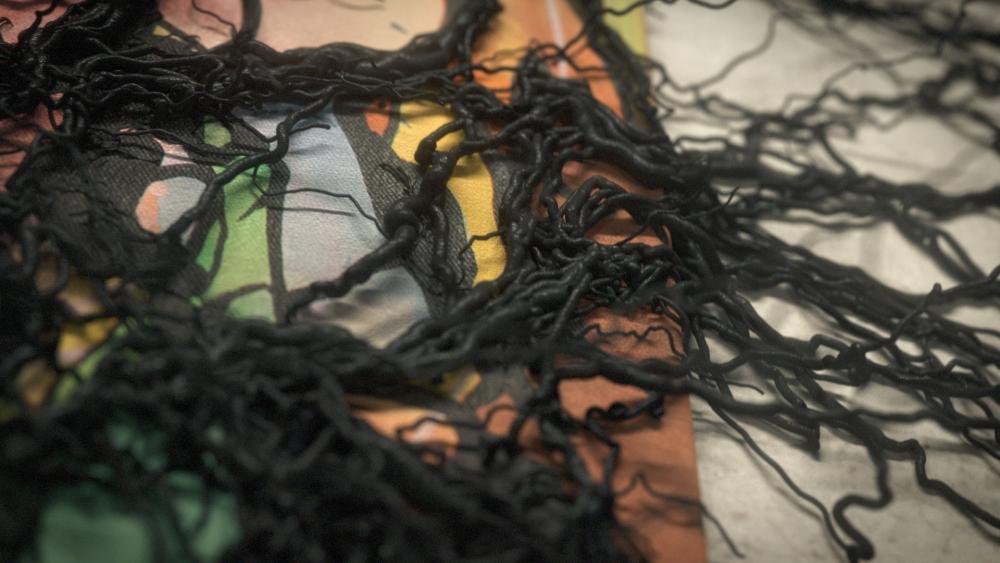
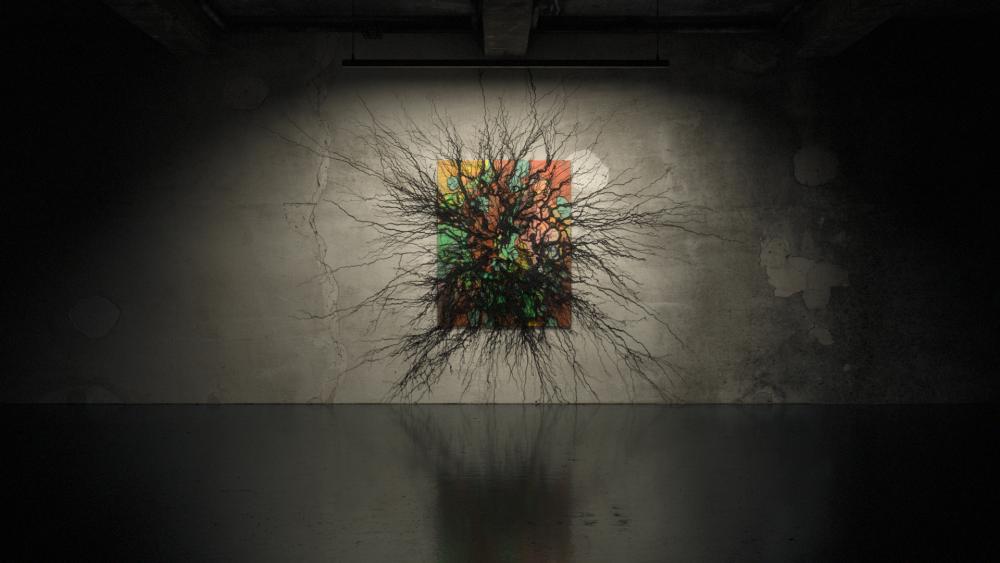
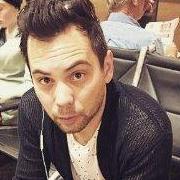
.thumb.png.f3d09eb281a4acb68d541ef58dfdd3d3.png)

